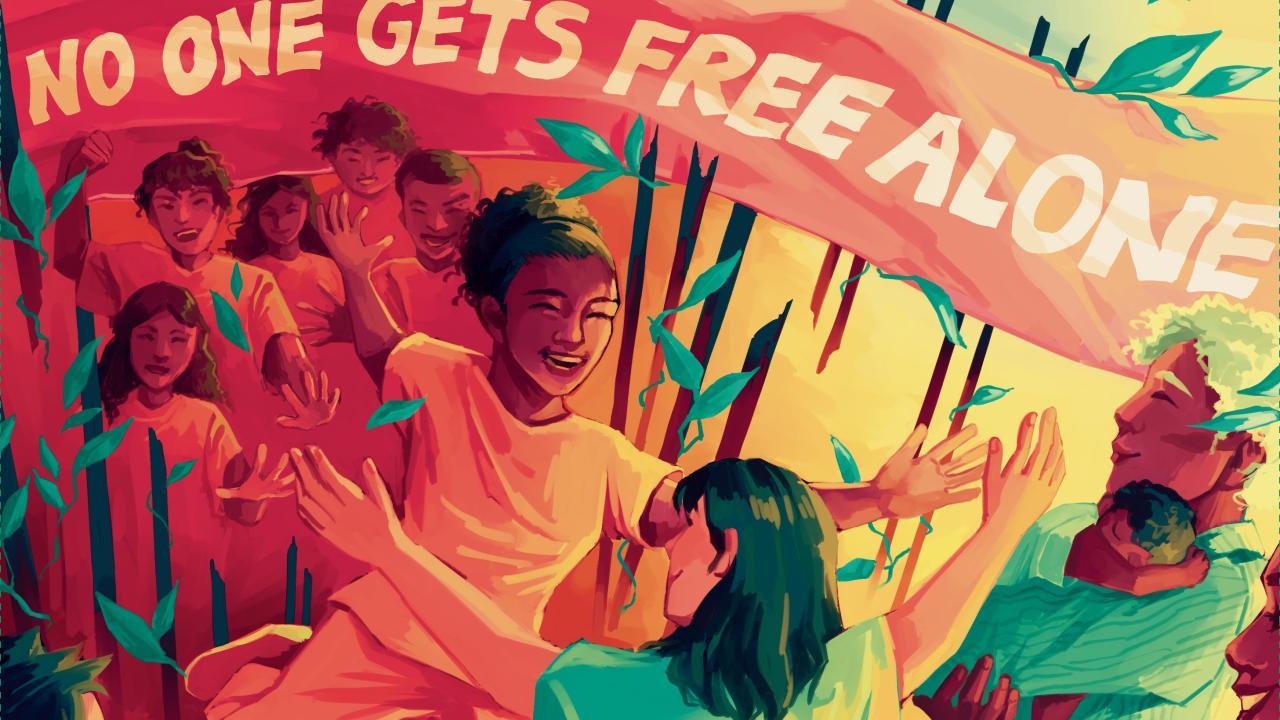Quick Summary
- With time in lockdown extended, in-person visitation completely stopped, and email and phone time drastically reduced, people in prison had returned to writing more handwritten letters.
Ben Weber is assistant professor in the Department of African American and African Studies, UC Davis; and Pam Fadem and Rachel Klein are with the California Coalition for Women Prisoners
The first documented case of COVID-19 in California was on Jan. 26, 2020.
It soon spread to California prisons, where outbreaks and lockdowns wreaked havoc.
This new threat facing people inside prison could only be dimly imagined by loved ones, friends and allies on the outside, who were cut off from usual visitation and other forms of communication, including JPay, email and phone calls. Within months, reports of new quarantine units — such as Building 503 at the Central California Women’s Facility —“the world’s largest women’s prison” — made it clear that prison guards, along with California Department of Corrections and Rehabilitation (CDCR) policies and practices, were enabling the spread of the deadly virus. The use of medical lockdowns to control and punish further endangered people’s lives.
Women in prison, such as longtime California Coalition for Women Prisoners (CCWP) member Laura Purviance, described the lockdowns as being similar to solitary confinement. People inside felt so unsafe, Purviance told reporters, some asked family members to take out life insurance policies on them.
Professor reaches out
CCWP’s emergency COVID-19 response was in full swing when Benjamin Weber, assistant professor of African American and African Studies at UC Davis, reached out to CCWP organizers to see what he could do to help.
Two members of CCWP’s The Fire Inside prison newsletter editorial collective, Pam Fadem and Rachel Klein, put the question to incarcerated CCWP members.
With time in lockdown extended, in-person visitation completely stopped, and email and phone time drastically reduced, people in prison had returned to writing more handwritten letters.
Under COVID-19, women in prison were looking for a mental escape, ways to sustain connections and community, and an outlet to process and advocate for issues at the foreground both inside and outside the prisons. Since The Fire Inside already circulated through the postal service, the idea for a letter correspondence group clicked.
Together they put out the call for an “Open Letters Writing Group” in December 2020 issue of The Fire Inside, inviting people to study famous open letters in Black history and write in the style of authors such as Ida B. Wells, Claudia Jones, Maya Angelou, Assata Shakur, Angela Davis and Alicia Garza.
A host of individuals from prisons around the country responded, and 20 incarcerated individuals requested to join — 17 women and three men. Over a year-long process, members of the Open Letters Writing Group wrote reflections about published open letters, exchanged feedback, and then composed their own open letters inspired by those they studied and as a call to action. Grounded in a Black studies approach to collective storytelling, the writing group used modes of horizontal feedback, reflection and collaboration in studying the past to write personal narratives about the present and future.
Learn More About Public Impact Research Initiative
- If you want to learn more about Assistant Professor Benjamin D. Weber's work, here is his project summary.
- Recipients of a Public Impact Research Program grant will receive $5,000 to $10,000. Learn about our application process.
- Public engagement is all about people. Read other stories.
